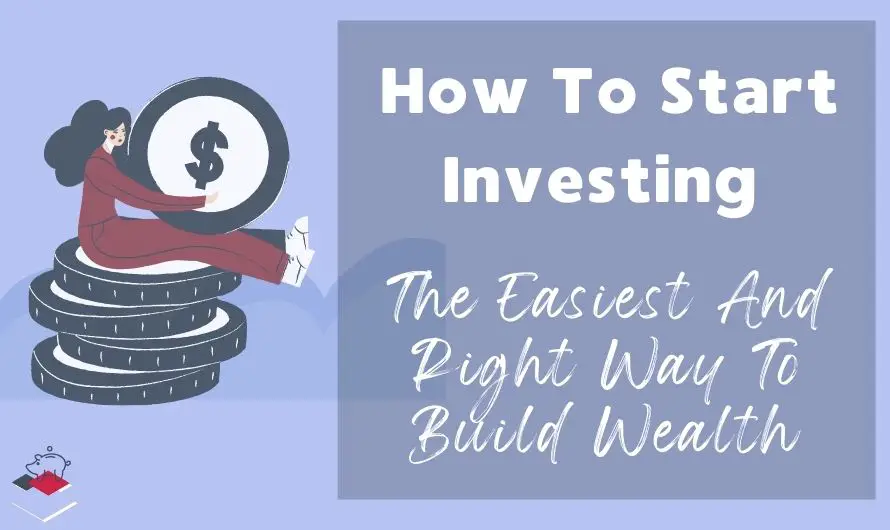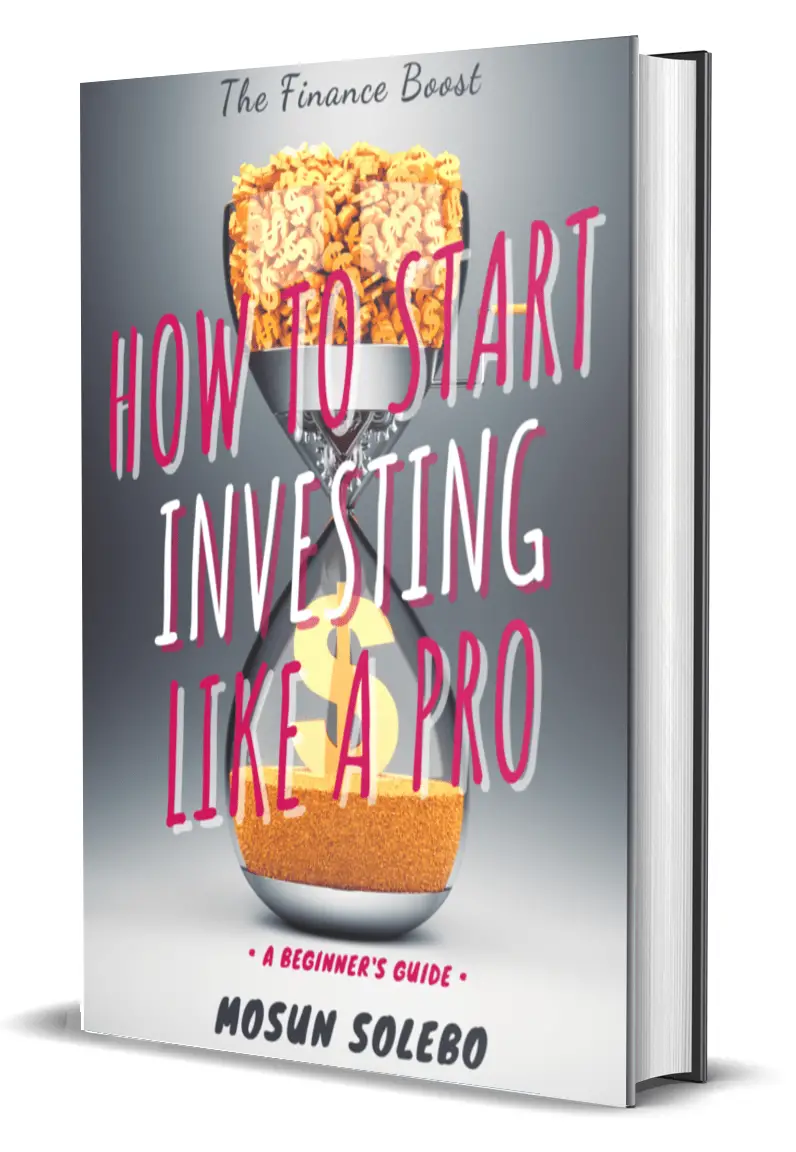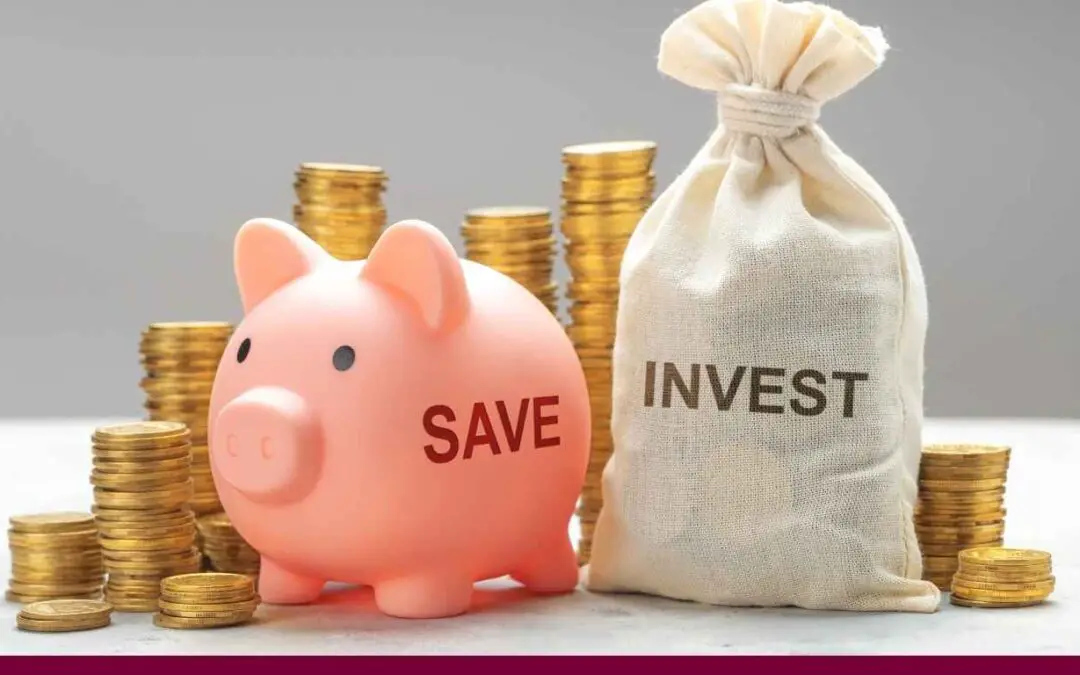How do you start investing?
When you hear the word “wealth,” what do you think of? If you think of ‘super-rich, ‘billionaire,’ ‘houses and cars,’ well, that’s a tiny fragment of what wealth is.
But thoughts like that make ‘being wealthy’ seem far off for the regular individual.
Wealth is a measure of one's assets, and becoming wealthy comes from following one of the crucial but simple principles of money: Investing.
I’m sure you already know how investing your money is one surefire way to build wealth that will outlast your existence and it can also protect your money from inflation.
However, more often than not, the “getting started” part is what defines the game.
It is not news flash anymore as it is reported that only 52% of American families have investment accounts, at least geared towards retirement.
You probably have misconceptions and decades of limiting beliefs about the wonders of investing and money in general, but this time, you don’t need it anymore.
In this post, let’s talk about how to start investing. That is, even if you have to start from scratch, have little to no money, or you need a refresher. This post will finally end your procrastination, and we hope that at the end of this read, you will do one thing today- Open your investment account and start NOW!
How to start investing- 6 Easy Ways To Get Started.
1. Start early.

It may sound like a cliche, but it’s pure truth. Besides, you should start investing as young or as early as you can.
The logic behind it is that if you start young, you have far more years ahead of you to grow and multiply your money. Therefore, even if you lose a part of it in the short term, you can quickly recover because time is on your side.
Aside from that, you have more years that you can dedicate to earning more money through jobs that increase your income. So, just like how others adore your youth, use it to your advantage. With more time, your money can grow faster.
Moreover, don't forget the power of compounding. It is the ability of an asset to generate earnings. In simple words, it is generating earnings from previous earnings.
2. Decide how much to invest.

As much as we emphasized how investing early can bring brighter results, keep in mind that it’s also never too late to start investing your money or even building new financial goals.
But before you dedicate time, effort, and money, you should manage yourself first.
How to start investing you ask? Here’s some self-assessment to take note of:
- What is the end goal of your investment?
- How long is the time horizon? Am I in it for the long haul? (long-term investing is at least five years or longer)
- Set realistic targets
- Stick to your investment plan. Do I want to be wholly hands-on or seek assistance from experts? DIY Investing or the classic “set-it-and-forget-it?”
- Guard your emotions. If the market is “bearish,” when can I hold until I anticipate the “bullish” state? Should I dump my shares, exit immediately or stay a little longer when my portfolio displays red and negative numbers?
- Put money in the stock market that you don’t need in the short run or only an amount of money you can afford to lose.
- If you have extra money that you don’t need in the short term, you can add it anytime.
Again, check yourself and your budget. It doesn’t matter how much you can spare to invest as long as you invest right and as early as now. Know that you can invest even a tiny amount of money which can be a fraction of your take-home pay.
Read more: How to build assets? The secret to wealth revealed for young adults!
3. Open an investment account.

There are many to choose from, but you can begin with opening an IRA or an individual retirement account. You can also contribute to a 401(k) if your employer offers it and matches your contribution. Besides, you can allocate even 1% of your paycheck to your 401(k) (it’s practically free money!)
Here’s a quick summary of how to start investing: Let’s walk through the process of opening your first investment account.
- 401(k)– ask your HR about joining your company's 401(k) plan. Fill out the application and set up auto contributions from your paycheck.
- Roth IRA Account– Pick a $0 trade fee broker, select Roth IRA from account options and fill out your personal information.
The exact process applies to opening a traditional IRA or a Standard Investment Account.
See, it’s now easier to open your first investment account. Then. of course, you have the option to go physically to a brokerage firm or bank. But, on the other hand, you can also effortlessly and painlessly do it through an online brokerage or investing apps and Robo-advisors like Wealthfront.
Moreover, most Robo-advisors offer zero charges, no maintenance fees, and zero trade fees. With the ease of opening an investment account nowadays, you can do it from the comfort of your home through your mobile phone and laptop.
Read more: How to Open a Roth IRA Account?- Simple and Easy Beginner's Guide
4. Know your asset class.

You don’t want to go into a gunfight with a knife as your only weapon, do you? Hence, know what you're dealing with. So the next thing to do is to determine which type of assets you will start investing in.
This is how to start investing: Read these previews of different asset classes to choose and invest in.
1. Stocks
- Part-ownership in a company; a piece or slice of one company
- Requires more money to invest in stocks of multiple companies to get a diversified portfolio
- Can be volatile and high-risk, especially for young and unproven companies
- Individual stock investing is best for investors interested in doing lots of market research to analyze potential winners.
- Returs and growth are through capital appreciation (i.e. increase in the price or value of stocks) and dividend payouts (distribution of a portion of a company’s earnings, which can be cash, additional shares, or other property)
2. Bonds
- Simply a loan to a company or government
- You already know how much earnings or interest you will get at a certain date at the end of the bond term
- Fixed-income security. I.e. there's an agreed upon return rate at the time of purchase
- Less risky but offer low returns
- You get paid the principal + interest at a fixed time interval
3. Mutual Funds
- A basket of investments or pooled funds. i.e a mutual fund can contain multiple investments in different securities
- Professionally managed by fund managers
- They aim to outperform the market and tend to have high fund management fees
- One mutual fund will diversify your portfolio more than shares of one stock
- Some require a minimum investment amount
- An order for a mutual fund can only be fulfilled at the end of the trading day.
4. Exchange-traded Funds (ETFs)
- A fund that contains a bunch of assets (stocks, bonds, real estate, etc.)
- You can trade it throughout the day on an exhange
- No minimum investment required beyond the price of one share
- You can buy from any broker without transaction fees
- Investing in ETFs is way less scary, easier, and more efficient.
5. Index Funds
- A pot with lots of stocks and other assets
- Mimics an index like S&P 500.
- Seeks to match the performance of the market or a benchmark stock market index
- It could be focused on tech stocks, healthcare stocks, all U.S. stocks, China stocks, government bonds, etc.
- With index funds, you’re not worrying about “which stock?” instead, you are focusing on “which sector?” or “which location?”
- You can only buy it at the end of the trading day.
- Some require a high-minimum investment as high as $3,000
- Can only buy the broker-specific funds without incurring charges
- Index Funds are the cheaper, easier, and quicker way to invest and build a well-diversified bag of wealth.
5. Investment Strategy

Probably you’ve heard about the notorious phrase, “Buy low, sell high.” or “Sell anytime but wait ‘till it goes up in value.” But if you're a newbie, it may take a while for you to absorb all the tips and tricks. Even those investment strategies that expert investors have been doing for a long time.
Hence, we share with you the basic investment strategies on how to start investing that you can easily follow.
1. The BUY and HOLD strategy
It is a strategy that essentially teaches you to buy an asset or stocks and leave them for a long period of time in your portfolio in anticipation of growth and asset appreciation. You do this regardless of the fluctuations in the market for over ten years, ideally.
It is effective when the overall market trend is up and if you have substantial capital to plug in and leave. Plus, if you’re confident and sure that your chosen assets will appreciate. However, it requires a longer time and a more significant capital amount.
Although the stock market does not move in a straight line, in the buy and hold strategy, you’re not diversifying through time.
The best example is when you buy stocks in the year 2021 and then sell them in 2030.
2. Market Timing
The market timing strategy is what most active traders do. They are trying to earn money with the price fluctuation by timing the market.
Essentially, they buy and sell (buy at a lower price and sell at a higher level)
Market timing requires dedicated time and expertise to gain from the short price change or increase within the day. Moreover, this is where technical analysis comes to play.
3. Dollar-Cost-Averaging
This investment strategy is all about investing a fixed amount of capital periodically. So it depends on you as to how long you are going to stay invested. Plus, you also decide whether you invest monthly, quarterly, or every two or four months.
The gist is that you keep buying (investing) regularly at the same amount, say $250.
This strategy is ideal if the overall trend is going upwards, you don’t sell often, and your capital is diversified.
You spread the risks and save money by increasing your buying capacity while investing regularly with the dollar-cost-averaging. So the high and low, don't worry you; you keep putting the same amount of money into your investment basket.
This is ideal for beginners if you don’t have a lump sum to invest because you can increase your investment over time while gaining from the price appreciation.
It's also my favorite way to invest, especially when combining this strategy with investing in low-cost index funds and ETFs.
6. Patience is a virtue.

Keep in mind that long-term wealth requires a check of your emotions. So, first and foremost, you should manage your expectations and emotions.
Essentially, the stock market will go down, and opportunities will arise. So be patient and don't sell short early. Investing also takes self-discipline.
Moreover, check first that before you invest, you have already built your emergency fund, have no debt with > 6% interest rate, have extra cash you don’t need for the next five or more years and are not trying to get rich overnight.
How much money should a beginner invest for the first time?
Depending on your budget, you can even start with minor amounts. For instance, $1 or $50 and then increase your investment budget from there.
The beauty of the digital age of investing is that you can invest fractionally. What that means is if the price of one share is $500 and you only have $50 to invest, you can invest the $50 and get 1/10th of that share in your account.
So, definitely start small to get comfortable and to make sure you don't get discouraged and scared off investing if you haven't built a tolerance to the market's swings.
How do I start investing with $100?
You can start investing your $100 through fractional shares of stocks or ETFs with apps like M1 Finance. Moreover, you can begin to invest in your knowledge and skills first. There are tons of great resources online, such as books, blogs (like this one), and webinars that teach how to start investing the easy and the right way.
Remember, just because you have the means or can afford it doesn't mean you have to join the wagon immediately. Investing in stocks without any prior knowledge is like jumping off a cliff with your eyes wide open.
Start Investing With M1 Finance
Free Automated Investing App with $0 Commissions and NO management fees
Read the review and learn how to use M1 Finance here.
What should I invest $1000 in?
With $1,000 you can choose to spread that across multiple stocks through fractional investing as well. Or you can simply put it in a total market index-tracking ETF like Vanguard's VTI or an S&P 500 index-tracking ETF like Vanguard's VOO.
This would immediately spread your risk across 100s of companies, whereas buying individual stocks gives you less room to diversify with $1,000
You can do this through a standard brokerage account from a broker like Fidelity, Vanguard, or Charles Schwab, or you can open a Roth IRA account through these same brokers and invest in ETFs in your Roth IRA.
Learn How to Open a Roth IRA Account
Everything you need to know plus simple and easy steps to get started
Can I start investing with $5?
Yes, you can, why not? Thanks to popular investing apps and Robo-advisors that let you buy fractional shares of stocks and become part-owner of the shares of your favorite companies.
For instance, you can also check out Acorns. It is a financial app that caters to micro-investing and lets you invest your spare change.
Essentially what Acorns does is that it rounds up any purchase made from a linked account (debit or credit). Once your change reaches $5 then it's transferred to an account where Acorns can invest from a choice of twelve different exchange-traded funds (ETFs)
Related: How To Invest In Property With Little Or No Money
Bottomline
Continue expanding your knowledge and taking advantage of resources and learning materials offered by your brokerage or chosen investment apps. For how to start investing, it is a matter of continuous learning and practicing what you have previously learned.
Not all investment tips and tricks may work for all or the same investor. You have to see what works best for you and which is aligned with your financial goals.
Therefore, jump over a main investing barrier by opening one investment account today. Of course, you don't have to fund it right away, but it'll at least take you one step closer.
Remember, just start!












0 Comments